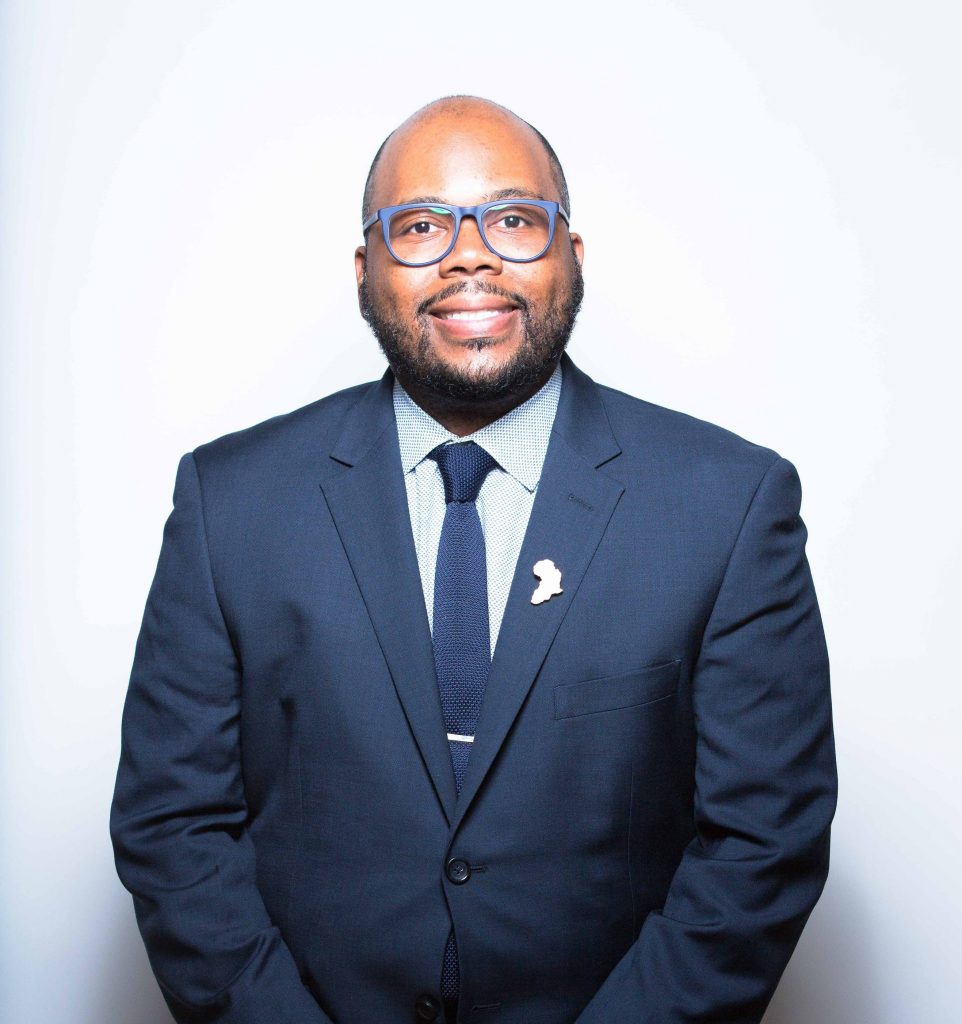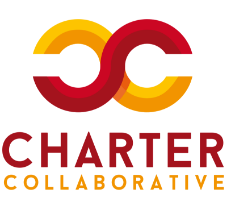
Myron Long
Founder & Executive Director,
The Social Justice School
5The Social Justice School
Location: Washington, DC
Year Opened: 2020
Student enrollment: 50
Grades served: 5th & 6th grade
Website: www.thesocialjusticeschool.org
Student Demographics
Black/African-American: 94%
Hispanic/ Latino: 6%
Homeless Students: 0%
FRPM/FRPL %: 66%
Students with Disabilities: 22%
ELL/ESL Students: 4%
MY JOURNEY TO SJS
I’m a native Washingtonian. I grew up in the 90s here in DC. As a student, I was successful at learning in a factory model. You gave me an assessment and I could meet expectations. I excelled, so my teachers expected me to be on a pathway toward college and career. My friend Walter loved to design and build things, but school wasn’t built to support him as a learner. Our teachers had very low expectations for him. Walter was killed by police when I was in high school. I ended up skipping school to attend his funeral. My theory is that if teachers have low expectations, young people are schooled by the streets.
Low expectations are the result of white supremacy in schools. Mass incarceration plus the so-called war on drugs plus an outdated school system have led to the peril of Black and Brown communities. I saw that first-hand, and I knew that if we were going to change the world, we had to have education at the center of it and address the social and political context. I became an educator, taught for several years, and served as a middle school principal for several years.
During that time I had wonderings about what could happen if students had opportunities to participate in real world learning rooted in social justice. I saw young people really engaged around the killing of Michael Brown. I also saw young people who were starting to construct and internalize negative racial identities in middle school. They were doing it under the table without being supported by parents, teachers, and staff members. We wanted to see if we could develop a school model rooted in social justice and built around culturally responsive learning that would empower our young people to make positive change in the world.
A SCHOOL ROOTED IN SOCIAL JUSTICE
The Social Justice School started as an iteration within a small advisory. Our second iteration was a 12-week pilot program that culminated in the creation of a podcast called “The reality of intersectionality.” Then we created a Freedom Academy and took students on a trip to the Legacy Museum in Montgomery, Alabama to study the history of slavery and mass incarceration in America.
Our school is rooted in building identity and engaging in real world work focused on social justice, using liberatory design thinking. We’re located in Ward 5 community, because we saw a major gap there. Right now, we have 50students with capacity to serve 65. We started this year with 5th and 6th grades; we’ll add 7th next year and 8thfollowing year. We’re a small community by design and will only serve 300 students at full capacity. Our scholar-activists are predominantly Black and Brown, 22% of our students receive specialized instruction, and almost 70%are considered “at-risk”. We’re drawing heavily from Ward 8 and Ward 3 as well as Ward 5. Our families chose usbecause they’re either super interested in social justice or already active in local social justice communities. As aresult of the uprising for racial and social justice, they’re looking for opportunities for their children during theseturbulent times.
We chose the EL Education model because it’s a cohesive framework that incorporates deeper learning principles and that aligns with what we’re hearing from parents. We like that kids can share what they’re learning and are proud of with the community. We’re using the EL curriculum for literacy, because many of their modules are rooted in social justice and real world issues. Our expeditions live in a social justice maker space that we call the Liberation Lab. Our scholar-activists take what they’re learning in literacy courses and apply liberation design thinking, which adds power, privilege, and equity to the design process. They use technology to build prototypes of possible solutions they’re designing. With virtual learning, we’ve sent home Liberation design kits that include cards, pipe cleaners, cardboard, newspaper, rulers, pencils, markers, play-doh, and other materials for designing.
We’ve developed a non-traditional hiring process and look for teachers who are committed to being anti-racist, anti-xenophobic, and anti-sexist. We’ve put processes in place to assess teachers’ capacity to be vulnerable. We ask them to look at a time when race or gender caused pain for them and created opportunity for growth. We’re not saying we’ve figured it all out, but we’re committed to being on the journey. We give candidates feedback on scenarios and lessons and ask them to do role plays again, because we want them to see the importance of iteration. We start and end interviews with circles, because we want candidates to feel known, challenged, and loved.
THE FUTURE OF SCHOOL
I strongly believe that the future of school should look like schools that continue the legacy of the Freedom Schools movement during the 60s and 70s. We need to provide a strong academic foundation and social activism that will allow us to transform education by empowering young people to tackle the societal issues that impact their education. I’m hoping that the Social Justice School can be a model of what that could look like. We want our young people to ask about why the social hierarchy exists. It’s not just about putting Black and Brown people at the top of the hierarchy. It’s about creating a new shape that’s inclusive. We want to engage in tackling the fabric of injustice in our country.
Being a leader of color and native Washingtonian helps me in my capacity to understand the needs of the community I serve. Communities change and the needs of my community when I was growing up are different than the needs now, so I’m conscious about bringing my biases in. I can be a proof point for students that there are opportunities to be known, loved, and academically challenged. It allows me to be a fierce advocate for our needs as a school community and the larger community. Representation matters and being able to bring these experiences to the table in conversations about education reform at large in our city. We need leaders who are brave enough to have conversations about race and equity.
I’m a regular brother from uptown DC. I don’t have some of the same connections other leaders have in the city. I didn’t have access to the invisible playbook that’s part of the school design process. No one taught me to do the work of high level budget and operations. As a school leader of color, you need support from organizations who have access to this playbook that’s often invisible to help us unpack that playbook and understand our role as instructional leaders and politicians. Being a leader of color of a single-site school is a challenge, because we don’t have the human or financial capital that other schools have access to. We’re wearing multiple hats. New, single site schools’ voices often aren’t heard in conversations about advocacy.
We want our young people to have an ethos of social justice. We want them to be compassionate, vulnerable, and empathetic, to stand in the shoes of others and fight for others whose needs aren’t the same as their own. We tell young people all the time we’re not going to dictate where you go in your post-middle school experience. We want our young people to see themselves as the authors of their own scripts that are yet to be written.
